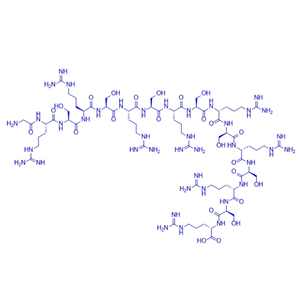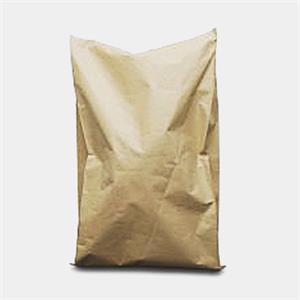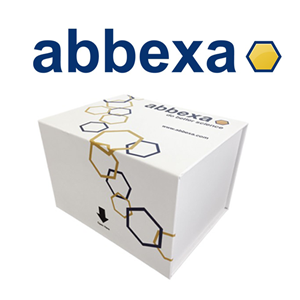| 名称 | RS 504393 |
| 描述 | RS 504393 is a highly selective CCR2 chemokine receptor antagonist (IC50s: 89 nM and > 100 μM for human recombinant CCR2 and CCR1). |
| 细胞实验 | Briefly, cytosolic calcium influx was measured in CCR2-CHL cells loaded with the fluorescent dye Fura-2-AM. Quantitation of signal intensity used the integrated signal intensity for 82 s after the addition of chemokine and thus has units of M·s. Antagonism by various compounds of calcium influx was measured using an approximate ED50 dose of MCP-1 (3 nM) and an approximate ED25 dose for MCP-3 (5 nM). Chemotaxis was measured over 1 h using THP-1–5X cells in a 96-well Boyden chamber apparatus. Cell migration through the polycarbonate filter was quantified by fluorescent staining using propidium iodide in 0.1% Triton X-100. These assays typically gave stimulated to unstimulated migration of 6-fold, range 4–10-fold, using a maximally effective concentration of MCP-1. Chemotaxis antagonist measurements used 3 nM MCP-1 or RANTES; these concentrations are near the ED95 attractant concentration for MCP-1 and for RANTES as agonists. The data are expressed by normalization to the uninhibited migration caused by the agonist chemokine. The antagonist was present in both chambers of the Boyden apparatus [1]. |
| 激酶实验 | Briefly, binding was measured using membranes prepared from two cell lines, THP-1 and CCR2-CHL cells. Each competition assay was composed of cell membranes, 50 pM 125I-MCP, MCP buffer, protease inhibitors, and test compound. Equilibrium was achieved by incubation at 28?°C for 90 min. Membrane-bound 125I-MCP was collected by filtration through GF/B filters presoaked in polyethyleneimine and bovine serum albumin, followed by four rapid washes with approximately 0.5 ml of ice-cold buffer containing 0.5 M NaCl and 10 mM HEPES, pH 7.4. MCP buffer consists of 50 mMHEPES, pH 7.2, 1 mM CaCl2, 5 mMMgCl2, and 0.1% bovine serum albumin. Protease inhibitors include 0.1 mM phenylmethylsulfonyl fluoride, 1 μM leupeptin, and 0.35 mg/ml pepstatin. THP-1 cells are a human monocyte cell line that express both CCR1 and CCR2. CCR2-CHL cells are Chinese hamster lung cells that have been stably transformed with an expression vector bearing the human CCR2b receptor [1]. |
| 动物实验 | To evaluate the therapeutic effects of MCP-1/CCR2 signaling, either propagermanium (3 or 8 mg/kg orally once a day) or RS-504393 (2 mg/kg orally twice a day) was mandatorily injected into their mouths to wild-type mice from 3 days before ureteral ligation until the day of sacrifice. In addition, to determine the viability for the usage of CCR2 antagonists for the treatment of renal fibrosis, propagermanium (8 mg/kg) was given daily, beginning 4 days after ureter ligation. For pathological examination, both the obstructed and contralateral kidneys were harvested from UUO animals 4, 7, and 14 days after ureteral ligation (n = 5 at each time point). Untreated age-matched male wild-type mice and CCR2-deficient mice were used as normal control (n = 6 for each group). Since propagermanium treatment was started from 3 days before ureteral ligation, mice treated with propagermanium for 3 days at day 0 were used as a negative control (n = 5) [3]. |
| 体外活性 | RS-504393抑制了CCR2-CHL细胞中由MCP-1刺激的钙流入,其IC50值为35 nM [1]。作为CCR2的拮抗剂,RS 504393的处理显著抑制了过敏原诱导的β-己糖苷酶释放。这种抑制效果可通过补充重组MCP-1蛋白(100 pg/mL)[2]部分逆转。 |
| 体内活性 | 相较于接受了载体处理的小鼠明显展现出急性炎症迹象,RS 504393处理的小鼠却未表现出即时过敏的临床迹象。在天真(naive)动物中未观察到任何效果。RS 504393处理的小鼠中肥大细胞的脱颗粒作用显著受到抑制,但对天真小鼠无影响[2]。与CCR2缺陷小鼠所获得的结果类似,RS-504393的治疗显著减轻了肾脏病理变化,特别是通过减少I型胶原蛋白合成介导的广泛间质纤维化[3]。 |
| 存储条件 | Powder: -20°C for 3 years | In solvent: -80°C for 1 year | Shipping with blue ice. |
| 溶解度 | DMSO : 10 mg/mL (23.95 mM)
H2O : Insoluble
|
| 关键字 | CC chemokine receptor | RS 504393 | RS504393 | Inhibitor | inhibit | CCR | RS-504393 |
| 相关产品 | BMS-817399 | Pirfenidone | WAY-639418 | PF-4136309 | AZD2098 | Aplaviroc | Vercirnon | CCR2 antagonist 5 | MLN-3897 TFA | CCR3 antagonist 1 | INCB-9471 | CCR6 antagonist 1 |
| 相关库 | 抑制剂库 | 趋化因子抑制剂库 | 肿瘤免疫治疗小分子化合物库 | 经典已知活性库 | 已知活性化合物库 | 高选择性抑制剂库 | NO PAINS 化合物库 | 抗COVID-19化合物库 | 膜蛋白靶向化合物库 | 表型筛选靶点鉴定库 |





